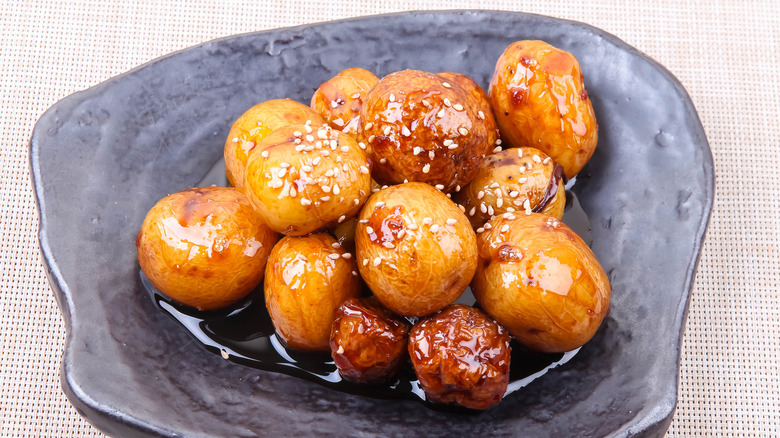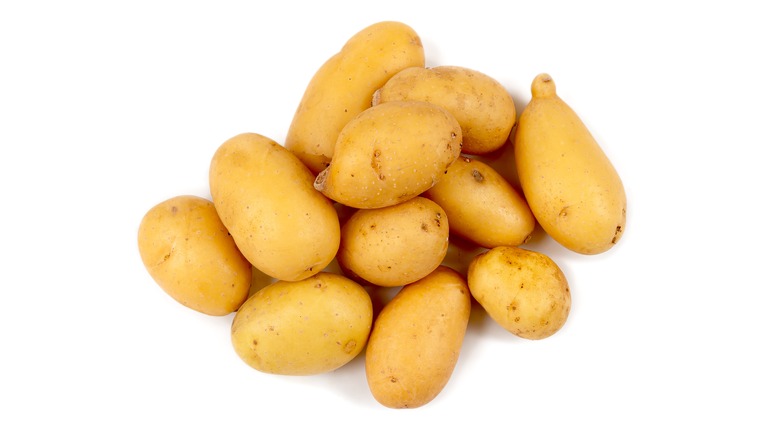Gamja Jorim: The Korean Roast Potatoes That Literally Shine
Potatoes can be prepared in many ways, but there is something extra delicious about biting into a spud with crunchy skin and tender flesh. The Korean dish gamja jorim delivers just such an experience that's also bursting with flavor. Some of gamja jorim's ingredients are traditionally used in Korean cooking (sesame oil, sesame seeds, gochujang, and rice wine), while others are not, like potatoes and carrots, according to a Korean Bapsang recipe.
Potatoes are native to the Andes Mountains in Peru and were transported to Europe and beyond by Spanish explorers. While they're not native to Asia, their popularity has grown through the centuries. According to Potato Pro, farmers on the continent grow 96 million metric tons of potatoes each year, up 50% from the previous decade. South Korea both produces and imports potatoes, much of which is made into potato chips. Since potatoes were introduced to the Korean peninsula, cooks have incorporated them into different dishes, such as spicy Korean chicken and potato (tak toritang) and potato pancake (gamjajeon).
Fry, then braise your potatoes
My Korean Kitchen calls gamja jorim irresistible where baby potatoes are roasted in a savory blend of soy sauce, rice wine, and brown sugar. Different potatoes can be used for gamja jorim, but the outlet prefers to use baby red royale potatoes that are about the size of quail eggs. Korean Bapsang goes for Yukon gold potatoes because they are less susceptible to collapsing compared to other varieties, but mentions that red, white, and fingerling potatoes are all suitable.
The roasting sauce for the potatoes is what really makes the dish. For the mixture, Korean Bapsang calls for 3 tablespoons of soy sauce; but for a little more heat, suggest swapping this for 2 tablespoons of soy sauce and 1 tablespoon of gochujang. The sauce is added to the potatoes after they have been frying over medium-high heat for about 4 to 6 minutes, per Okonomi Kitchen. Once the sauce is added, the contents of the pan need to be boiled, then covered, and allowed to braise. The end result is a crispy exterior with a soft inside.
Other vegetables can be added to gamja jorim, including carrots, onions, pumpkin, and bell peppers, per Okonomi Kitchen. Red pepper flakes (gochugaru) can be added to the dish for even more spiciness, according to Korean Bapsang. So the next time you are looking for a simple and delicious side dish, try your hand at gamja jorim, a sweet, salty, and sometimes spicy potato recipe.

